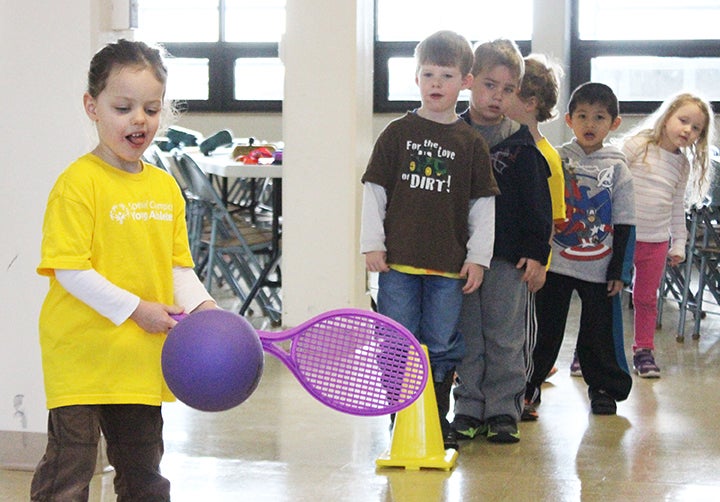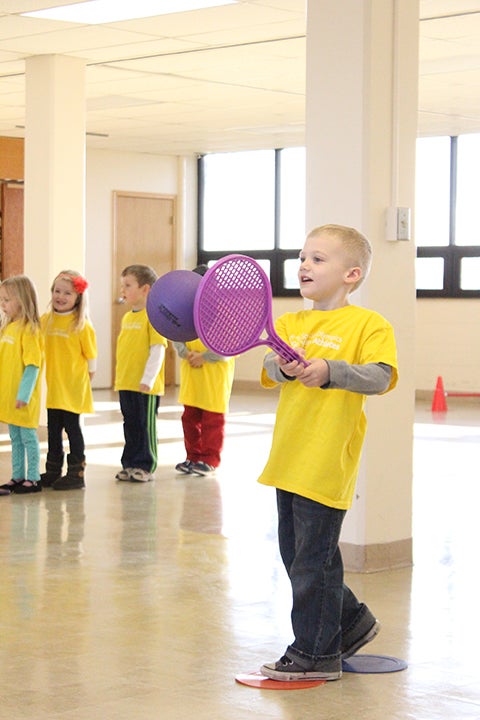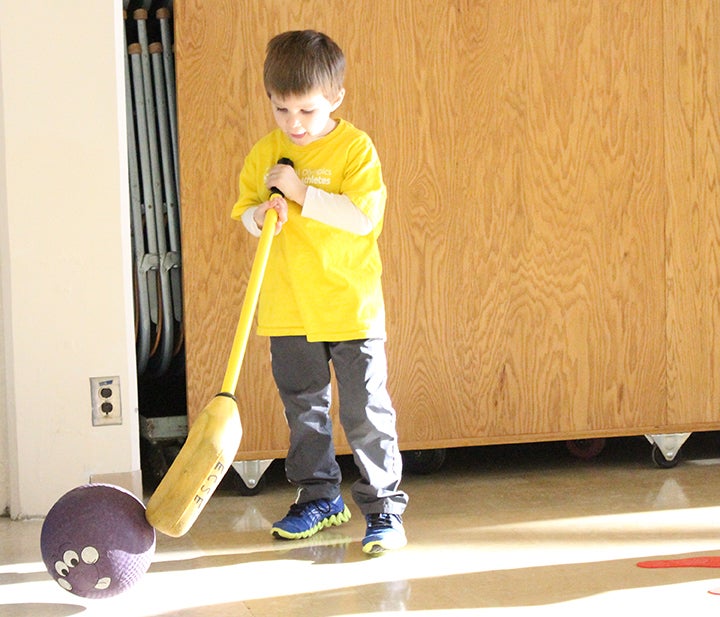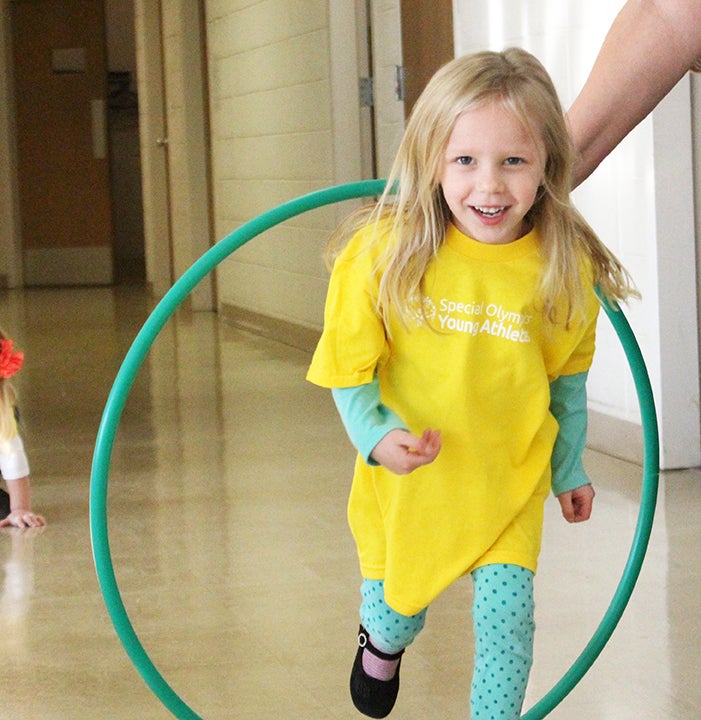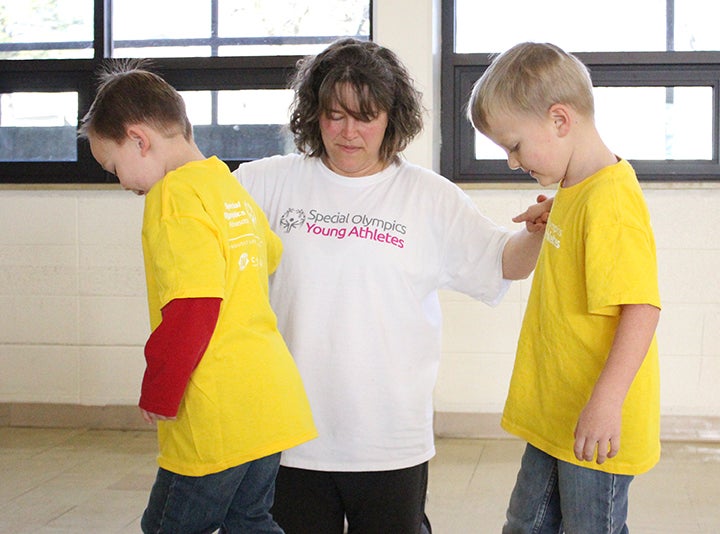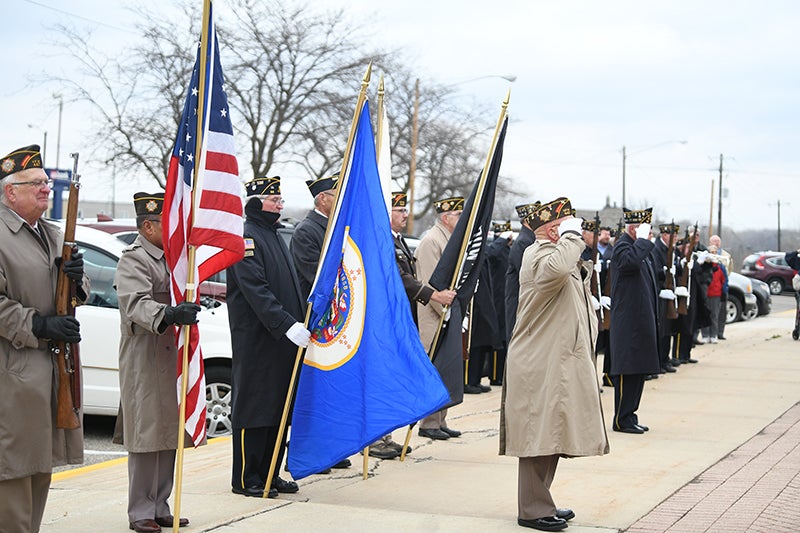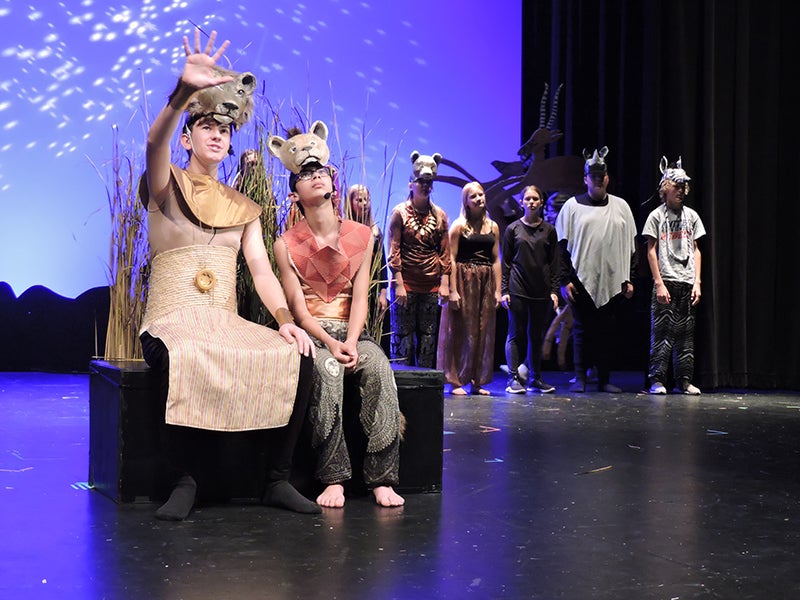[Updated] Gallery: Program allows kids to play before they’re eligible for traditional Special Olympics
Published 9:21 am Friday, November 29, 2013
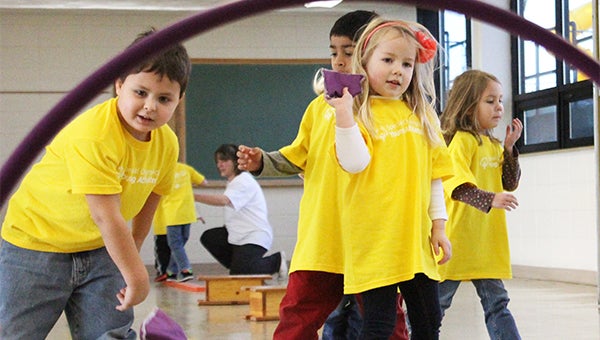
Isaiah Sevcik, left, and Claire Peterson throw beanbags through a plastic hoop on Monday morning. The students are part of the Special Olympics Young Athletes Program, which started at United Preschool this year. — Drew Claussen/Albert Lea Tribune
The goal of the Special Olympics Young Athletes program is to introduce children with and without intellectual disabilities to the world of sports.
After watching a group of joyful children take part in one of the program’s sessions at United Preschool in Albert Lea, it’s easy to see that its goal is being achieved.
Children with and without special needs are all grouped together in an inclusive setting, which is something that the program stresses. The classes help young children between the ages of 2 and 7 work on their hand-eye coordination and basic motor skills training — things that are beneficial to all young athletes.
“The program kind of takes away some stigma children would have when they’re playing with their peers,” Special Olympics Minnesota Initiatives Associate Jennifer Hansen said. “For that I think it’s fantastic, and I think that’s the greatest part about it.”
The Young Athletes program allows children to be active in Special Olympics before they are eligible to be active in the traditional program at age 8.
“Having this Young Athletes program is a way to fill a need for kids who can’t join our traditional teams,” Hansen said. “The other cool thing about it is that it’s inclusive so it’s for all kids.”
The message that there is a place for literally everyone in Special Olympics is something that Hansen is passionate about. Special Olympics has started promoting unified sports in which athletes with and without intellectual disabilities compete together. Hansen said the Young Athletes program follows the model of where the organization would like to go in the future.
“I want to make the point that Special Olympics is for everyone,” Hansen said. “I think that sometimes gets lost and people don’t realize that there’s a place for everybody to participate whether you have a disability or not. That’s kind of been my mission with this program.
Hansen said the program is funded by the annual polar plunge event and a yearly grant from Dairy Queen.
“The goal of Young Athletes is to be free for everyone,” she said.
The program is in its first year of existence at the preschool. It started in Minnesota four years ago and has been running worldwide for the past seven years. The classes in Albert Lea are led by Audra Beussman with help from numerous other teachers.
Students gather in United Lutheran Church’s dining hall for classes. The program uses basic sports equipment to encourage children to exercise their minds and imagination. The majority of the equipment for the 30-minute classes are provided by
Special Olympics.
“The cool thing about Young Athletes is it’s a package deal,” Hansen said. “When somebody decides to run it, they get all the equipment for free, the T-shirts for free, training for free, and each week that the teachers do it or somebody in the community does it, there’s well thought-out structured lesson plans.
“It’s really just somebody like me at the office handing off this program to somebody and saying, ‘Go ahead, have fun and run it,’” she added. “It’s really well done and well studied.”
In Monday’s class at United Preschool, students hit a rubber ball with a tennis racquet, hit a ball with a modified hockey stick and completed an obstacle course that included an on-floor balance beam, tossed bean bags through hoops, crawled through a tunnel, jumped hurdles and did a bunny hop.
Hansen said Albert Lea was one of the first schools to adopt the program and said she hopes more schools follow suit. So far the results have been good.
“This time last year we had no schools running the program,” she said. “Now we have schools asking me to join every week. From fall of 2012 to fall of 2013 we’ve grown about 800 percent in our number of participants in the program.”
- Students at United Preschool watch Anais Israel Nechanicky hit a rubber ball with a tennis racquet on Monday morning. The students are part of the Special Olympics Young Athletes Program, which started at United Preschool this year. The program allows children to be active in Special Olympics before they are eligible to be active in the traditional Special Olympics program at age 8. Children with and without special needs participated together. — Drew Claussen/Albert Lea Tribune
- Caden Forman hits a rubber ball with a tennis racquet during class on Monday morning. The students are part of the Special Olympics Young Athletes Program, which started at United Preschool this year. — Drew Claussen/Albert Lea Tribune
- Bryson Ohrtman hits a rubber ball with a modified hockey stick on Monday morning as part of the Special Olympics Young Athletes Program at United Preschool. — Drew Claussen/Albert Lea Tribune
- Danika Folie jumps through a hoop during class on Monday morning during the Special Olympics Young Athletes Program at United Preschool. — Drew Claussen/Albert Lea Tribune
- Teacher Audra Beussman guides Dylan Diaz, left, and Milo Cafourek across a on the ground balance beam on Monday. The students are part of the Special Olympics Young Athletes Program, which started at United Preschool this year. — Drew Claussen/Albert Lea Tribune


